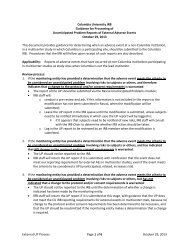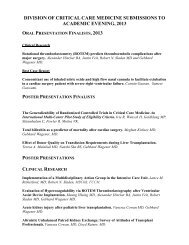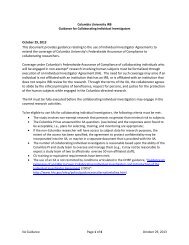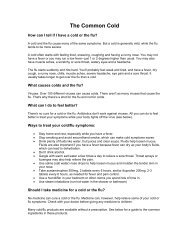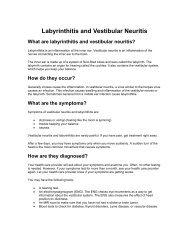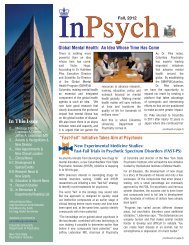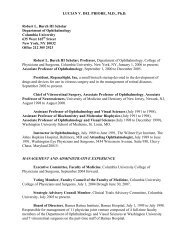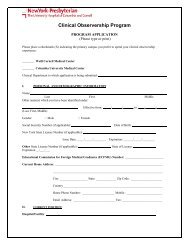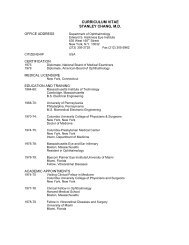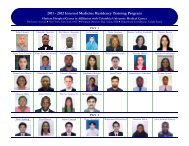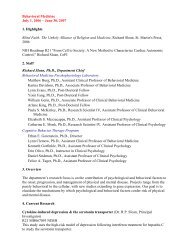news PS - Columbia University Medical Center
news PS - Columbia University Medical Center
news PS - Columbia University Medical Center
You also want an ePaper? Increase the reach of your titles
YUMPU automatically turns print PDFs into web optimized ePapers that Google loves.
— From “The Memoirs of Allen O. Whipple, 1881 – 1963”<br />
(unpublished) P. 232<br />
630 West 168th Street<br />
New York, NY 10032<br />
’’ ’’<br />
quotable<br />
columbians<br />
[A] hobby that I followed for some time was the collecting<br />
and studying of the hands of surgeons and physicians. At<br />
first I had the idea that there would be a definite difference<br />
in the shape and make-up of the hands of these two groups<br />
of practitioners. But as I collected models of some eight<br />
hands of well-known surgeons whom I had known in the<br />
American Surgical Association, and some thirty internists’<br />
hands, I realized that there was no difference. It soon<br />
became evident that, as in all walks of life, character was<br />
often expressed in the hand. Some interesting examples<br />
of this were shown in the hands of doctors with strong or<br />
striking personalities. Harvey Cushing, who was always<br />
positive in his opinions and well aware of his importance,<br />
sent me his hand, cast in bronze, with all his fingers in<br />
full extension and with all the tendons on the back of his<br />
hand tense and showing. Rudolph Matas of New Orleans,<br />
a most modest and cultured gentleman, always known<br />
for his desire to give his friends and associates full credit<br />
for everything that they had done (which resulted in<br />
his reading papers of interminable length) sent me the<br />
cast of his hand that suggested more than anything else<br />
a frightened bird seeking its nest. The men of artistic<br />
temperament, whether surgeons or physicians, had very<br />
much the same type of hands, with slender fingers longer<br />
than average. Most of the surgeons, because of their use of<br />
surgical instruments over long periods of time, had thicker<br />
and stronger palms and inter-osseous muscles than the<br />
internists. This was to be expected. This collection of hands<br />
stood on the top of my bookshelves in my office at the<br />
Presbyterian for several years and, when I retired, I left the<br />
collection to the surgical department.<br />
Non-Profit Org.<br />
U.S. Postage<br />
Paid<br />
New York, NY<br />
PERMIT NO. 3593<br />
‘ ‘‘ ‘‘<br />
Allen Whipple’s collection of hands<br />
disappeared — as he expected it would<br />
— after his retirement in 1946.



